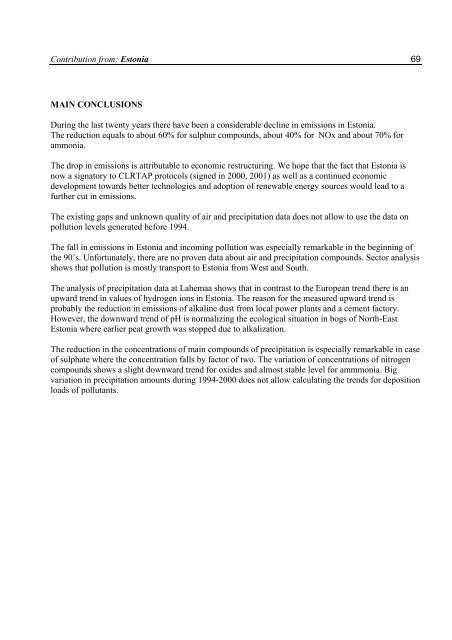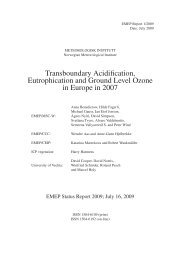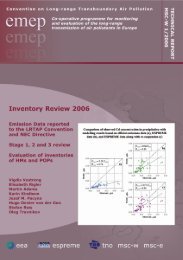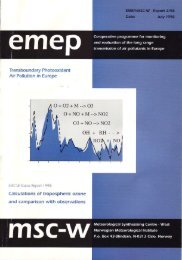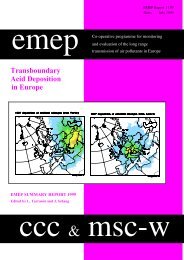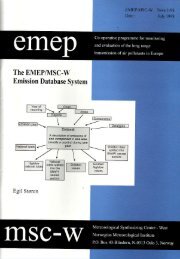Estonian EMEP Assessment Report
Estonian EMEP Assessment Report
Estonian EMEP Assessment Report
Create successful ePaper yourself
Turn your PDF publications into a flip-book with our unique Google optimized e-Paper software.
Contribution from: Estonia<br />
MAIN CONCLUSIONS<br />
During the last twenty years there have been a considerable decline in emissions in Estonia.<br />
The reduction equals to about 60% for sulphur compounds, about 40% for NOx and about 70% for<br />
ammonia.<br />
The drop in emissions is attributable to economic restructuring. We hope that the fact that Estonia is<br />
now a signatory to CLRTAP protocols (signed in 2000, 2001) as well as a continued economic<br />
development towards better technologies and adoption of renewable energy sources would lead to a<br />
further cut in emissions.<br />
The existing gaps and unknown quality of air and precipitation data does not allow to use the data on<br />
pollution levels generated before 1994.<br />
The fall in emissions in Estonia and incoming pollution was especially remarkable in the beginning of<br />
the 90’s. Unfortunately, there are no proven data about air and precipitation compounds. Sector analysis<br />
shows that pollution is mostly transport to Estonia from West and South.<br />
The analysis of precipitation data at Lahemaa shows that in contrast to the European trend there is an<br />
upward trend in values of hydrogen ions in Estonia. The reason for the measured upward trend is<br />
probably the reduction in emissions of alkaline dust from local power plants and a cement factory.<br />
However, the downward trend of pH is normalizing the ecological situation in bogs of North-East<br />
Estonia where earlier peat growth was stopped due to alkalization.<br />
The reduction in the concentrations of main compounds of precipitation is especially remarkable in case<br />
of sulphate where the concentration falls by factor of two. The variation of concentrations of nitrogen<br />
compounds shows a slight downward trend for oxides and almost stable level for ammmonia. Big<br />
variation in precipitation amounts during 1994-2000 does not allow calculating the trends for deposition<br />
loads of pollutants.<br />
69


